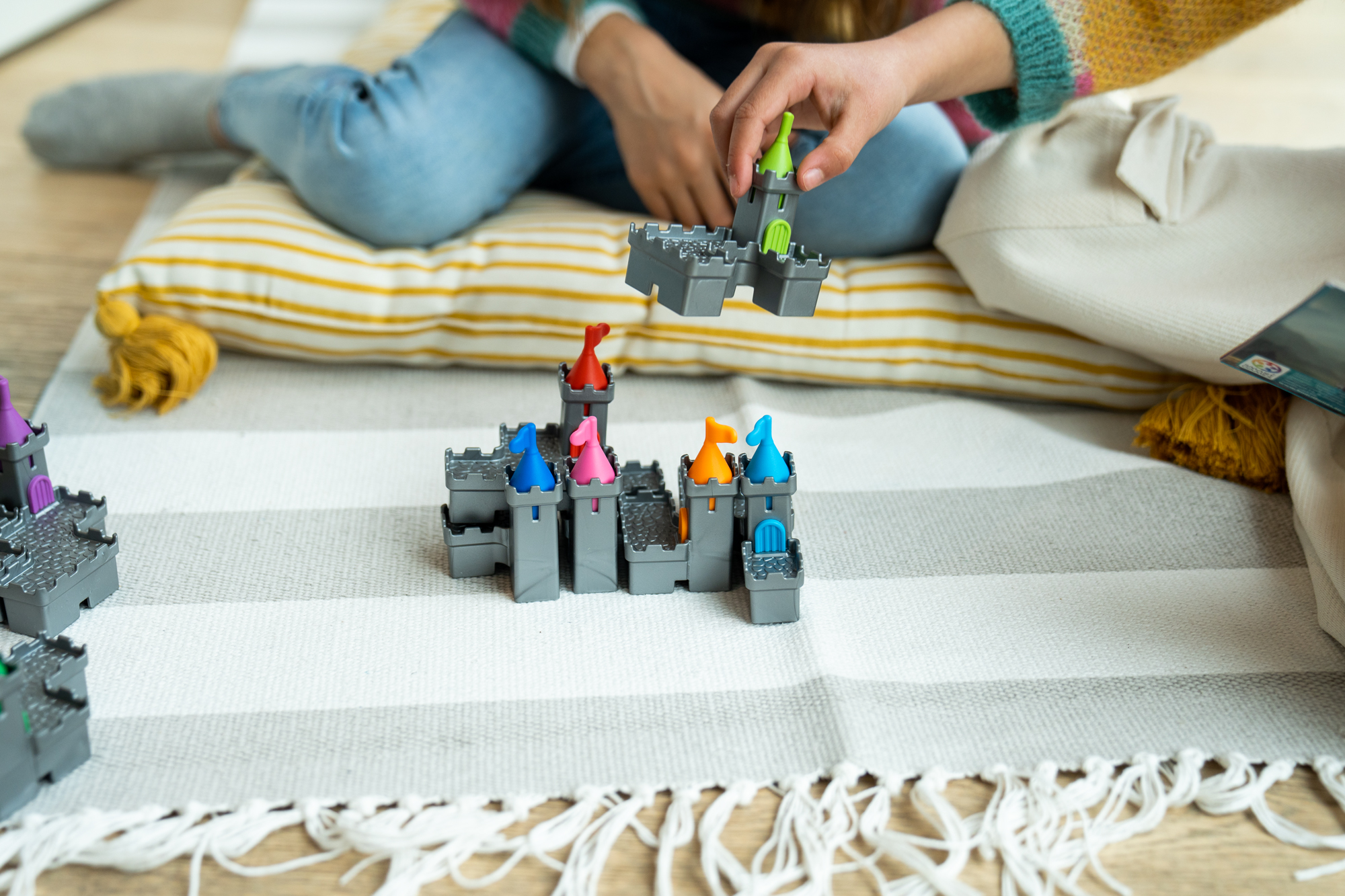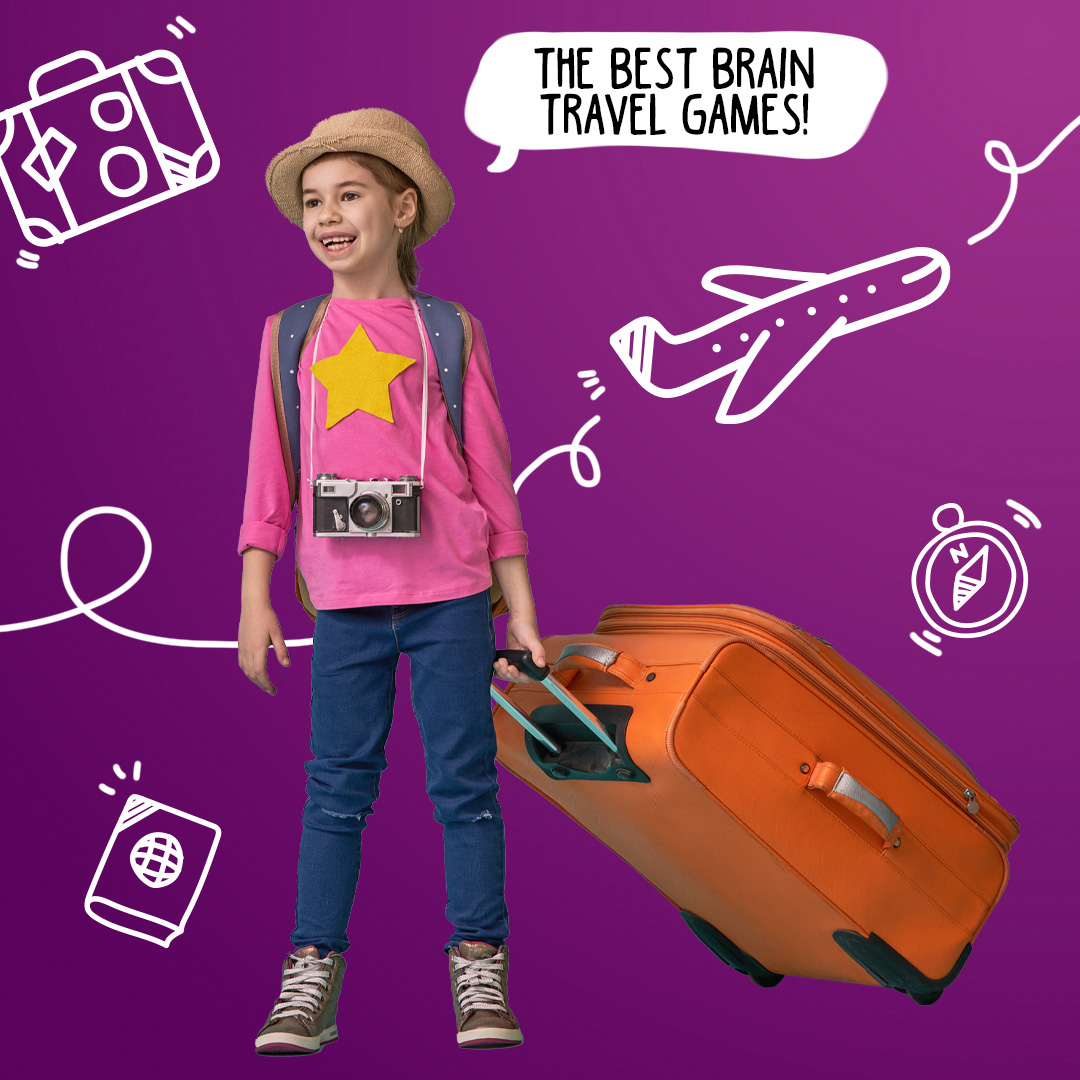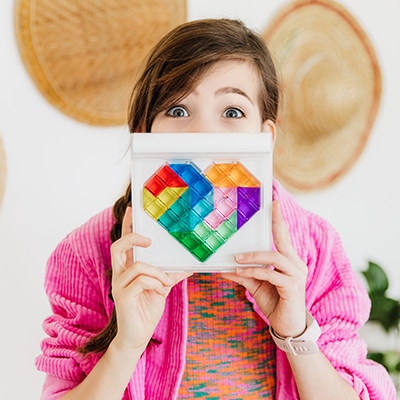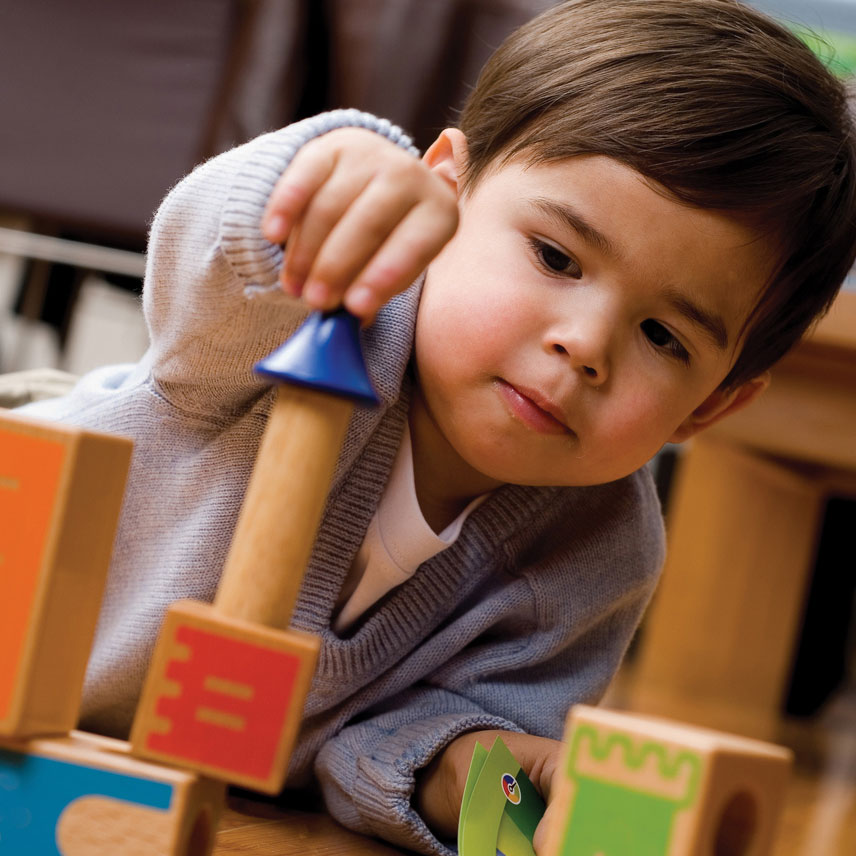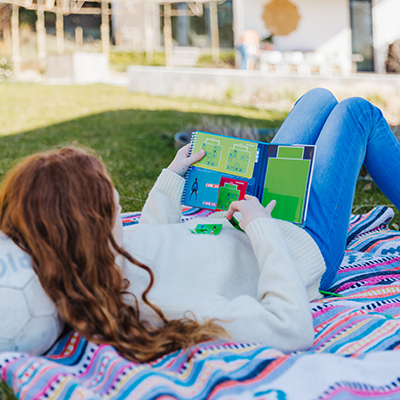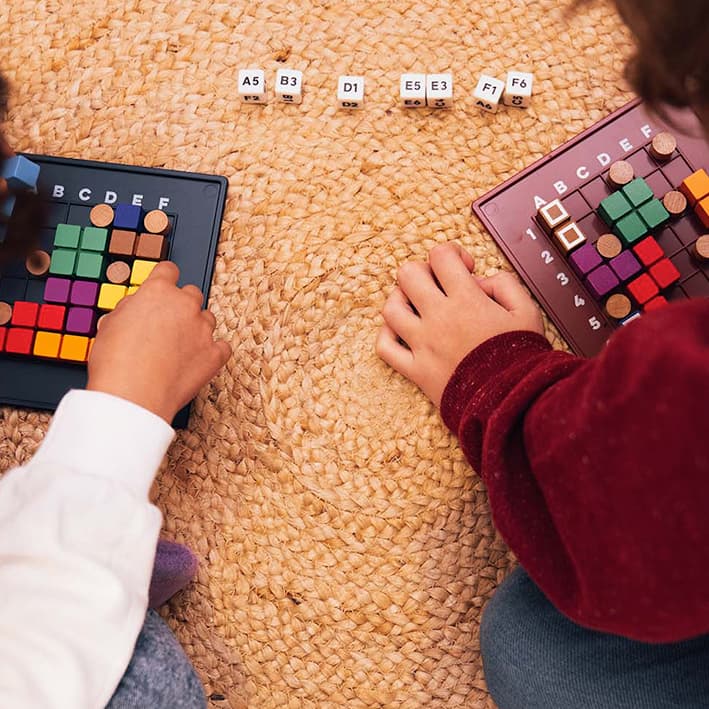Want to improve your visual-spatial skills? Here is how!
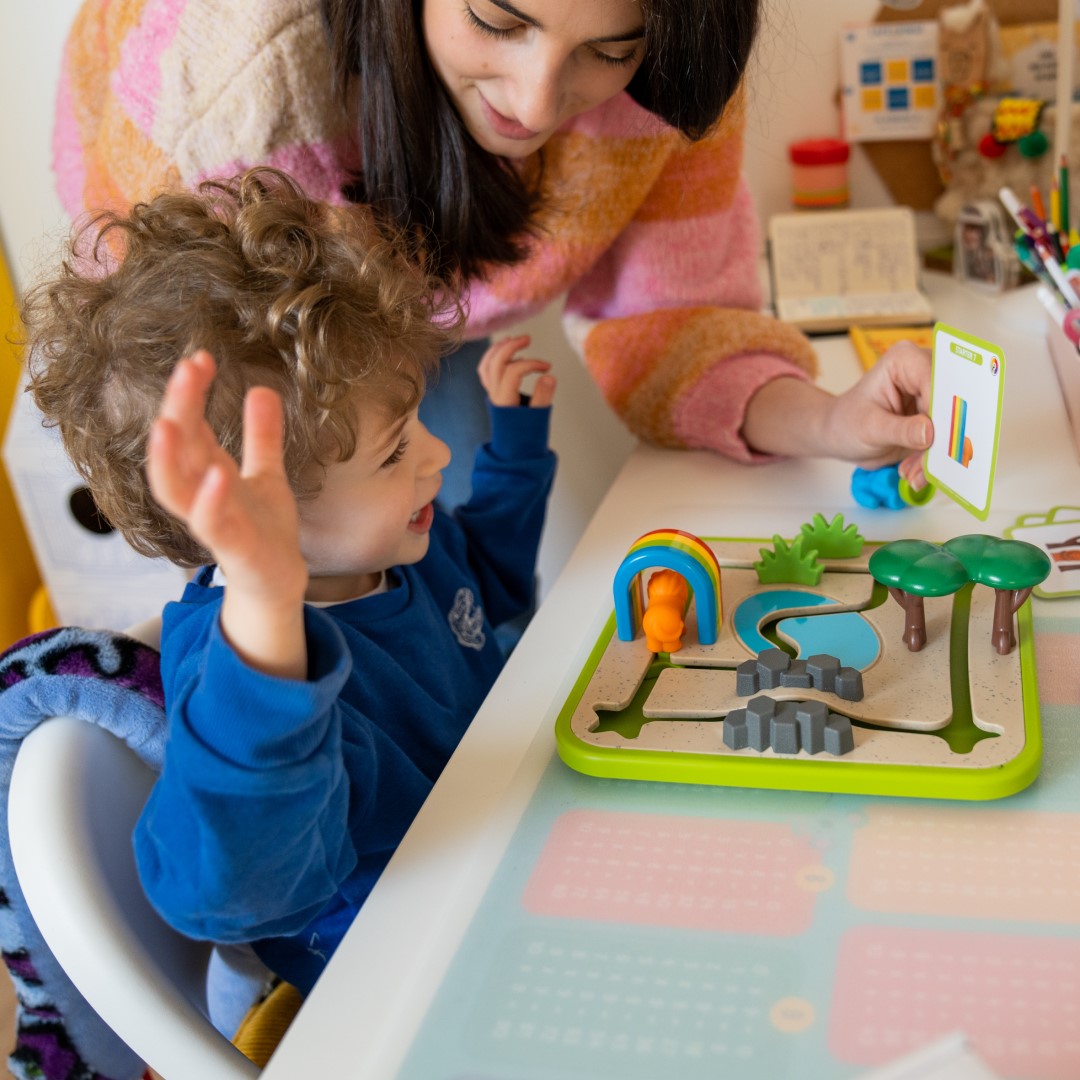
Did you know that a lot of jobs require visual-spatial skills? Mathematicians, neurosurgeons, architects, engineers, designers, programmers, and so on all use visual-spatial skills. These are the abilities you need to mentally envision, analyse, manipulate, or rotate 2D and 3D figures. You use them in your daily life to pack your suitcase, to park your car, to tie your shoe, or to read a map. Here is how, no matter your age, you can sharpen these important skills while playing games! Get your game on!
Peek-a-Zoo is a great game for pre-schoolers to learn visual-spatial skills. Play together with your toddler and use spatial language and gestures while playing the game. Studies show that children whose parents use gestures and language filled with words like short, big, pointy, left, on top, diagonal, … perform better on spatial tests. Encourage your little one to repeat the words and use them for a faster learning curve. This construction matching puzzle stimulates children to match the image on the challenge card in shape, colour, and visible figures.
4-year-olds can try out Tangram Jr. Tangrams have been around for ages and originate from ancient China. You need to use the 7 puzzle pieces to recreate an animal, a person, or objects. These puzzles are frequently used in schools during math as spatial ability teaching tools. Don’t get fooled: some exercises seem easy at first glance, but they can be very challenging! Let your child rotate the puzzle pieces a couple of times so they can see how they will look upside down or pointed left versus right.
Criss Cross Cube is a fun 3D puzzle from the age of 8 to adult where you need to screw in different sizes of bolts into the transparent cube without blocking each other. Rotate the cube and watch it from all angles. Pre-envision your move before placing a screw. Exploring and handling the Criss Cross Cube helps anticipate how cubes (when not in the room) would look like when viewed from different perspectives.
Creating maps and pathways aids in sharpening these very important skills. Classic SmartGame, Horse Academy, needs you to bring the horse from start to finish by jumping over obstacles in the correct order. You need to, based on clues in the challenge, place the obstacles and puzzle pieces in the correct orientation on the gameboard and create a pathway.
Want to challenge a friend’s visual-spatial skills? Play Cube Duel! Get as many of your coloured blocks on the cube’s free side surfaces to win from your opponent. The person with the most visual-spatial talents wins! The game stimulates you to use these skills under pressure. Not winning yet? Practice in single-player mode to improve mental rotation!
What is your favourite visual-spatial skill improving activity? Let us know via @smartgamessocial !
More information and sources:
Li, Pamela (28 March 2023). Spatial Intelligence – 13 Ways to Help Children Improve. Parenting for Brain. https://www.parentingforbrain.com/visual-spatial-reasoning-skills-stem/
Drinko, Clay (2 February 2021). How To Improve Your Visual-Spatial Skills. LifeHack. https://www.lifehack.org/898614/visual-spatial-skills
Dewar, Gwen (2020). Improving spatial skills in children and teens: 12 evidence-based tips. Parenting Science. https://parentingscience.com/spatial-skills/
Pruden SM, Levine SC, Huttenlocher J. Children’s spatial thinking: does talk about the spatial world matter? Developmental Science. Published online October 4, 2011:1417-1430. doi:10.1111/j.1467-7687.2011.01088.x





